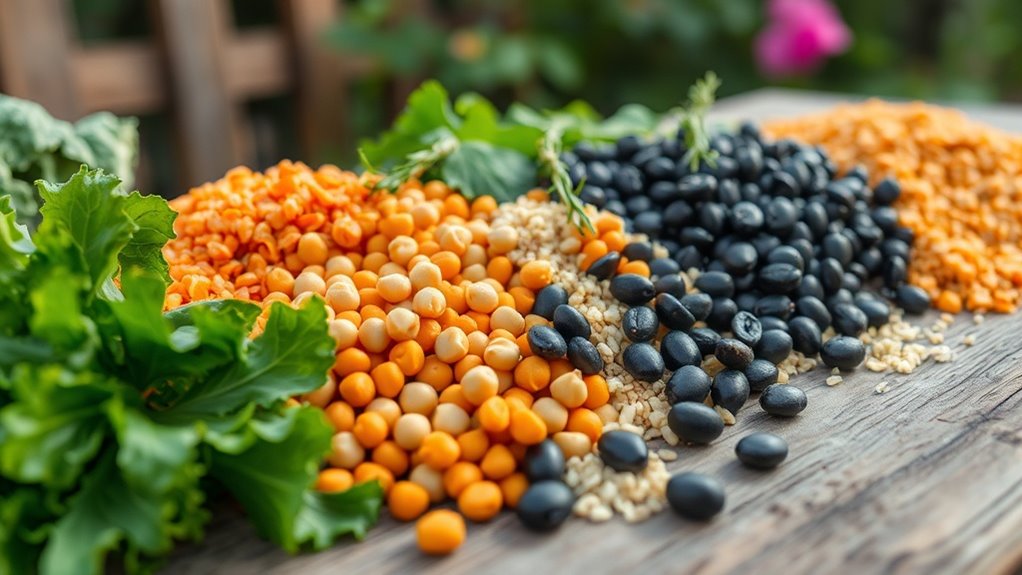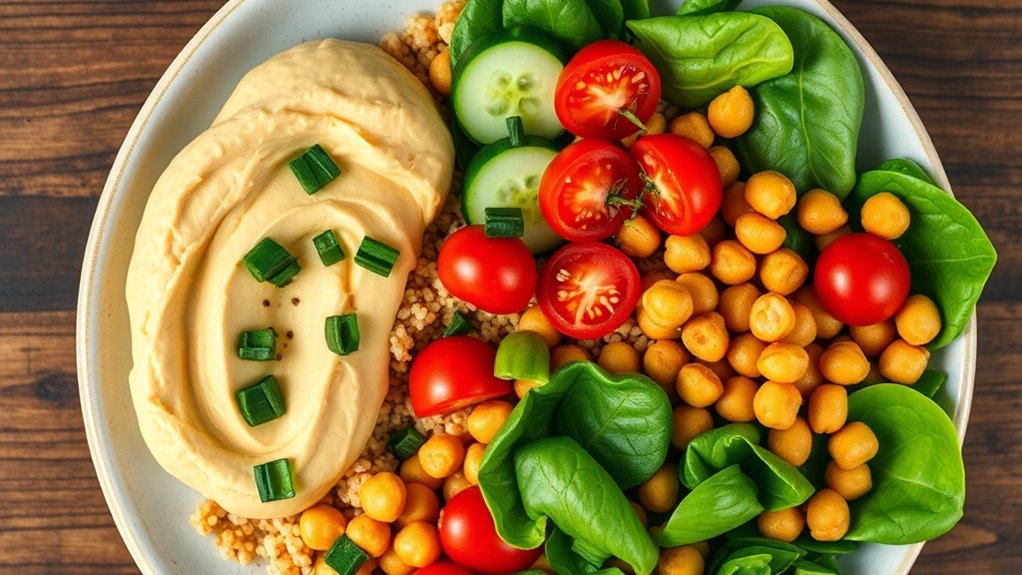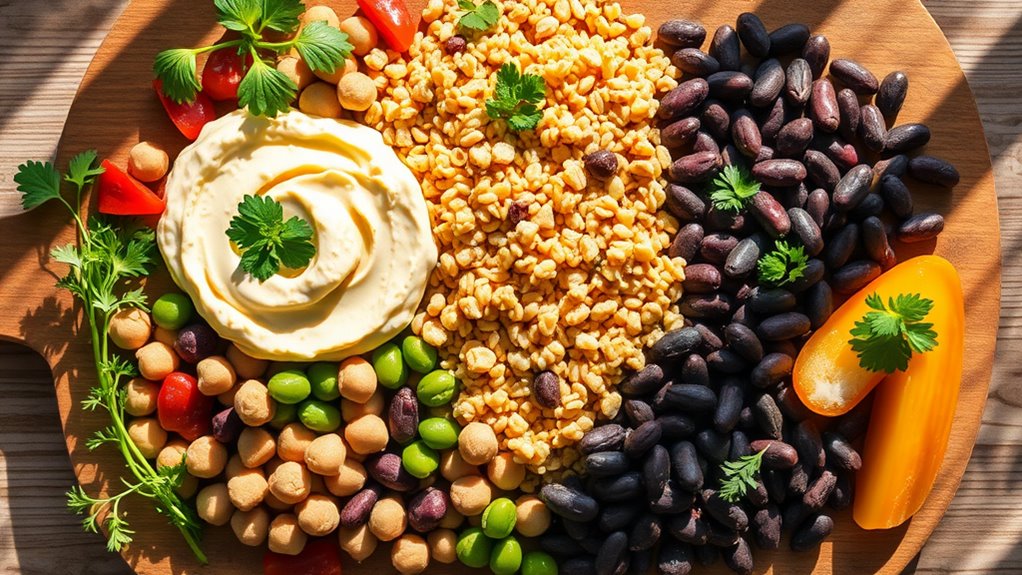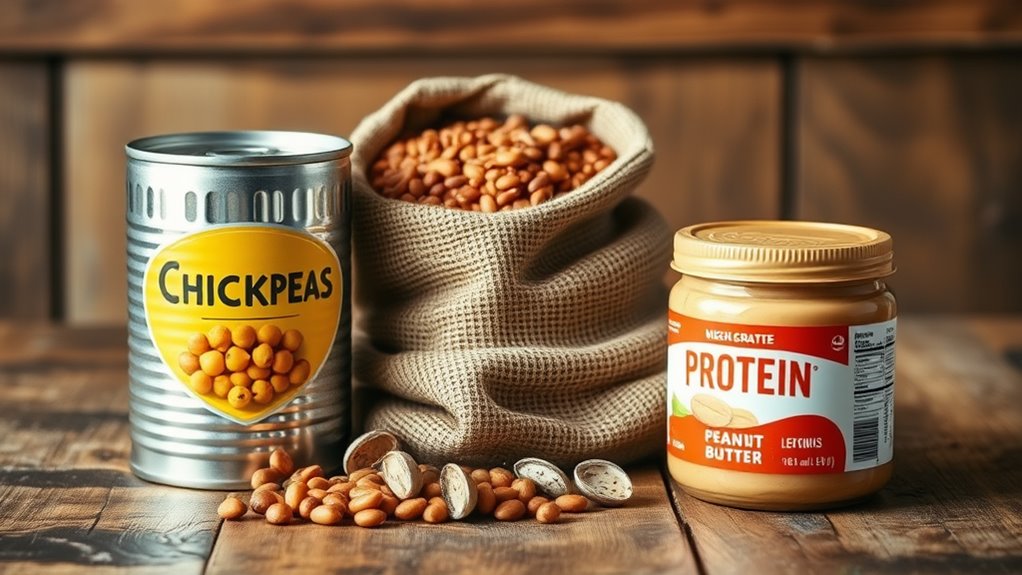The Secret to Plant-Based Protein. It’s Easier Than You Think
Imagine a busy student who switched to a plant-based diet and noticed a boost in their energy levels and focus. You might think it’s challenging to get enough protein without meat, but it’s simpler than you believe. By understanding how to combine different plant sources, you can easily meet your protein needs. Let’s explore how to incorporate nutrient-dense foods into your meals effectively.
Understanding Plant-Based Proteins
What makes plant-based proteins a compelling choice for your diet?
Plant protein offers numerous health benefits, such as lower cholesterol and improved heart health. They’re rich in essential nutrients like fiber, vitamins, and minerals, promoting overall wellness. Plus, incorporating a variety of these proteins can help you meet your amino acid needs while supporting sustainable eating practices. You can’t overlook their positive impact on the environment. Additionally, options like tofu and tempeh provide versatile sources of protein that can easily enhance a variety of dishes.
Top Sources of Plant Protein
As you explore the world of plant-based proteins, you’ll find an array of options that can easily fit into your meals.
Lentils, chickpeas, and black beans are excellent sources packed with protein and fiber.
Quinoa and edamame offer complete protein profiles, while nuts and seeds provide healthy fats.
Incorporating these foods will help you meet your protein needs effortlessly. Additionally, legumes are among the best sources of plant-based protein, contributing to overall health with their nutrient density.
How to Incorporate More Plant Protein Into Your Diet
Incorporating more plant protein into your diet can be simple and delicious. Start by swapping your usual snacks for chickpeas or edamame, and add lentils to soups and salads. Experiment with quinoa instead of rice. Check out this emotional table highlighting benefits:
| Benefit | Plant Protein Source |
|---|---|
| Energy Boost | Chickpeas |
| Heart Health | Lentils |
| Digestive Ease | Quinoa |
| Muscle Building | Black Beans |
| Nutrient Dense | Tofu |
Additionally, consider including legumes as nutritional powerhouses in your meals to enhance both protein content and overall health.
Combining Proteins for Complete Amino Acids
Combining different plant proteins can help you achieve a complete amino acid profile that supports your body’s needs.
For instance, pairing beans with rice or hummus with whole-grain bread ensures you get all essential amino acids.
Each plant source has unique amino acids, so mixing them boosts your protein quality.
This way, you can optimize your nutrition while enjoying delicious meals! Additionally, using homemade protein bars allows for a tailored mix of ingredients that can enhance your dietary intake further.
Easy Plant-Based Protein Recipes
There are countless easy plant-based protein recipes that cater to your taste buds while fueling your body.
Try a chickpea salad with avocado, leafy greens, and lemon dressing, or whip up lentil curry with spices and coconut milk.
Quinoa bowls with roasted veggies and tahini are also delicious. These meals not only satisfy hunger but provide essential nutrients for an active lifestyle. Incorporating quick protein sources into your meals can help enhance nutrition without sacrificing time.
Benefits of Choosing Plant Protein Over Animal Protein
Embracing plant protein offers a wealth of benefits that can significantly enhance your diet and overall health.
Plant proteins are often lower in saturated fat and cholesterol, helping to reduce heart disease risks. They’re rich in fiber, which aids digestion and keeps you full longer.
Plus, plant sources are more sustainable, benefiting the environment while providing essential nutrients your body craves.





